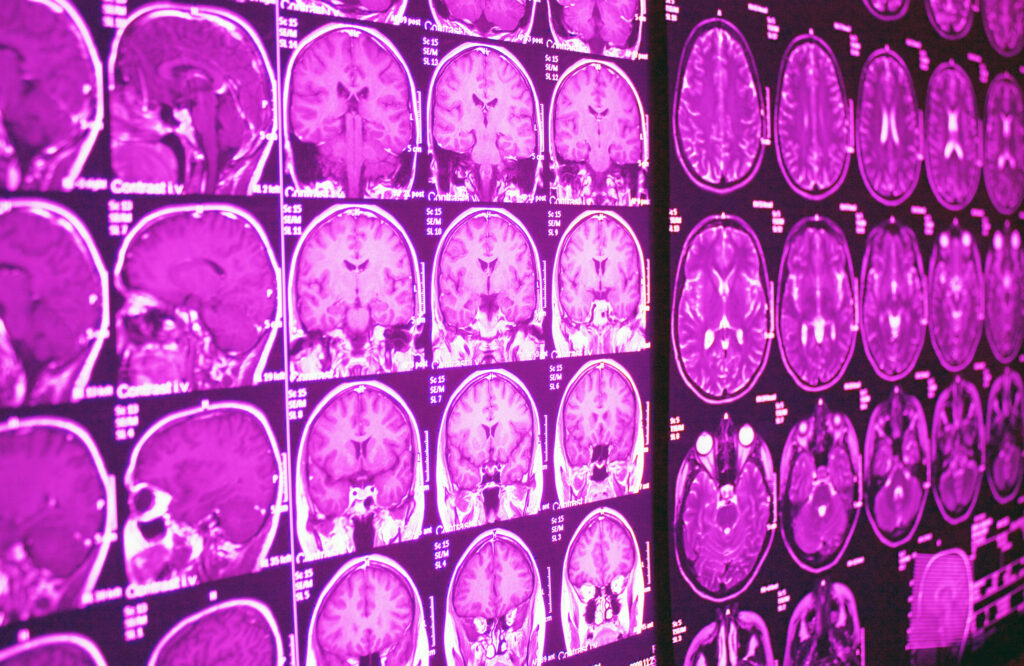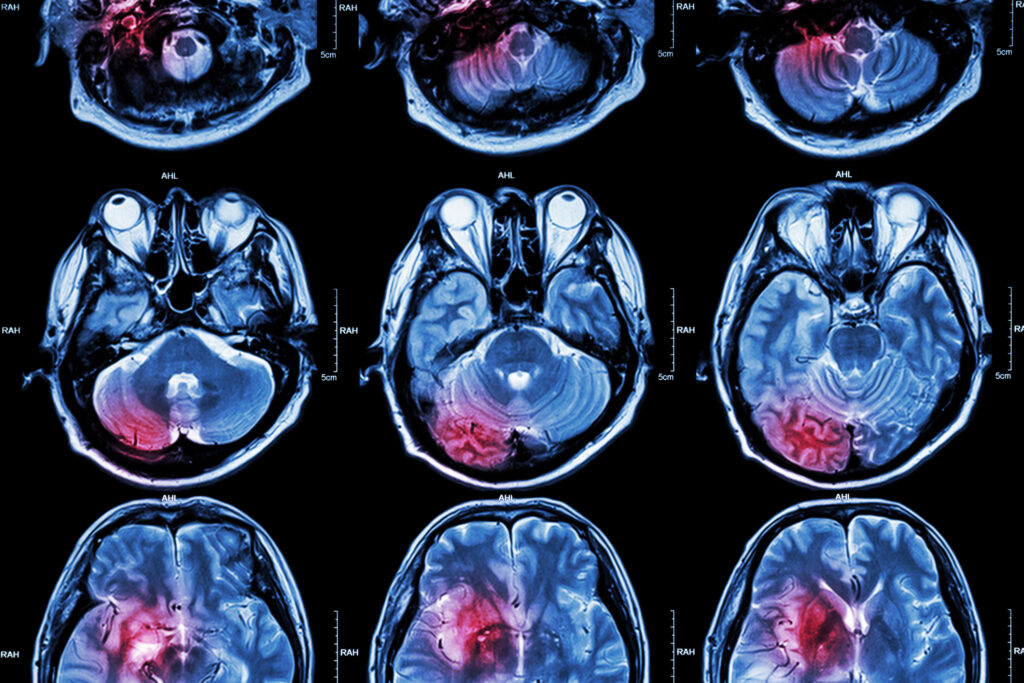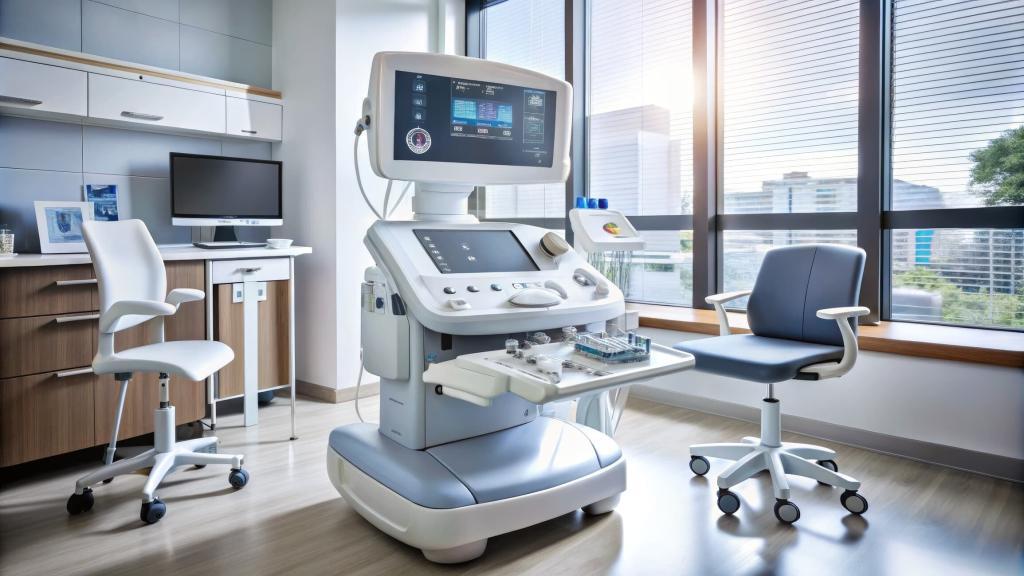Summary: Ultrasound scanning, a vital imaging technique in medicine, uses sound waves to create real-time images of internal organs, tissues, and structures. This article provides a step-by-step guide for interpreting ultrasound scans, covering the basics of ultrasound imaging, image orientation, anatomical markers, and common findings. By understanding these fundamentals, healthcare professionals and interested individuals can enhance their ability to read and interpret ultrasound images effectively.
Introduction to Ultrasound Imaging
Ultrasound, or sonography, is a diagnostic technique that uses high-frequency sound waves to produce images of structures within the body. It’s particularly valuable for visualising soft tissues, such as organs, muscles, and blood vessels, and is commonly used for examinations in obstetrics, cardiology, abdominal studies, and musculoskeletal assessments. Unlike X-rays and CT scans, ultrasound does not use ionising radiation, making it safer for repeated use and preferred in prenatal care.
Ultrasound imaging involves capturing real-time images, which provide dynamic information about organ function, blood flow, and movement. However, reading an ultrasound image can be challenging due to variations in anatomy, pathologies, and artefacts in the scan. Developing a systematic approach is essential for accurate interpretation.
Basic Principles of Ultrasound Scanning
Understanding the basics of ultrasound physics is crucial for interpreting images. Here are key concepts to keep in mind:
- Sound Waves: Ultrasound uses sound waves that travel through the body. These waves are reflected back from tissues, producing echoes that are processed to form an image.
- Echogenicity: The appearance of different structures depends on their ability to reflect sound waves, known as echogenicity. Structures can appear:
- Hyperechoic: Bright (e.g., bones, tendons)
- Hypoechoic: Darker (e.g., liver tissue)
- Anechoic: Black (e.g., fluid-filled areas)
- Frequency and Resolution: Higher frequency transducers offer better resolution but limited depth penetration, useful for superficial structures. Lower-frequency transducers penetrate deeper tissues but at a lower resolution, making them suitable for abdominal or pelvic exams.
Image Orientation and Transducer Position
Orientation is critical when reading an ultrasound scan. The transducer’s position relative to the patient and the body part being examined influences the direction of the image.
Image Orientation
- Transverse Plane: If the transducer is positioned horizontally (across the body), the image will display a cross-sectional view. In this plane, the right side of the screen corresponds to the patient’s left side.
- Sagittal Plane: When the transducer is placed along the midline (lengthwise), the image shows a longitudinal section. The left side of the screen typically represents the cranial (head) direction, and the right side represents the caudal (feet) orientation.
- Coronal Plane: A frontal view from the patient’s side, often used in specific examinations (e.g., kidneys).
Transducer Movements
Mastering transducer manoeuvres is essential for optimising the view:
- Sliding: Moving the transducer across the skin to locate the region of interest.
- Tilting or “Rocking”: Adjusting the angle to bring structures into view.
- Rotating: Changing the orientation from sagittal to transverse or vice versa.
Identifying Anatomical Landmarks
Recognising key anatomical markers is essential to navigate an ultrasound scan effectively. For example, in an abdominal ultrasound:
- Liver: Hypoechoic texture with prominent portal veins.
- Gallbladder: Anechoic (dark) due to its fluid content.
- Kidneys: C-shape with hypoechoic cortex and hyperechoic renal pelvis.
In a cardiac scan, the left ventricle and right atrium can be identified by their positions relative to each other and the flow of blood visible using Doppler imaging. Knowing these landmarks will aid in confirming that the scan is properly oriented and in identifying abnormalities.
Doppler Ultrasound: Assessing Blood Flow
Doppler ultrasound is used to evaluate blood flow and assess conditions related to blood vessels. The principle behind Doppler ultrasound is that sound waves reflect at different frequencies from moving objects, such as blood cells.
- Colour Doppler: Displays blood flow in colour, with red and blue indicating flow direction relative to the transducer.
- Spectral Doppler: Provides a graph showing the velocity of blood flow over time.
By examining these Doppler patterns, it’s possible to diagnose blockages, detect blood clots, and evaluate heart valve function. For example, turbulent flow patterns can indicate vascular issues such as stenosis.
Recognising Common Pathologies in Ultrasound
While a full understanding of pathologies requires experience, familiarity with common ultrasound findings can improve initial interpretation.
Cysts and Solid Masses
- Cysts: These appear as well-defined, round, anechoic structures with posterior acoustic enhancement (increased brightness behind the cyst). Cysts are typically benign, fluid-filled sacs.
- Solid Masses: Solid tumours or abnormal growths show varying echogenicity, depending on the tissue density and type.
Gallstones and Kidney Stones
- Gallstones: Hyperechoic structures within the gallbladder, casting posterior acoustic shadows. The presence of shadowing differentiates stones from other hyperechoic structures.
- Kidney Stones: Similar to gallstones, they appear hyperechoic with shadowing, often located in the renal pelvis or ureters.
Inflammation and Abscesses
Inflammatory conditions such as appendicitis can cause localised changes in tissue echogenicity. Abscesses may appear as hypoechoic areas with irregular, thickened walls, potentially with fluid-air levels.
Artefacts in Ultrasound Scanning
Artefacts are extraneous features that can obscure or mimic pathology. Understanding artefacts is crucial for accurate interpretation.
- Acoustic Shadowing: This occurs when sound waves are blocked by a dense structure, resulting in a dark shadow (e.g., behind bones or stones).
- Reverberation Artefact: Appears as repeated lines due to sound waves reflecting between structures (e.g., in air-filled lungs).
- Mirror Image Artefact: Creates a mirrored structure, often seen in liver scans near the diaphragm.
Being aware of these artefacts helps prevent misdiagnosis and allows for adjustments in technique to obtain clearer images.
Tips for Systematic Interpretation
A systematic approach ensures a thorough evaluation of the ultrasound scan. Here’s a general framework to follow:
Step 1: Verify Patient and Image Information
Check patient details, date, and region of interest before starting interpretation.
Step 2: Assess Overall Image Quality
Ensure the image quality is sufficient, with optimal gain, depth, and focal zones. Poor-quality images should be adjusted or re-acquired to prevent misinterpretation.
Step 3: Identify the Organ or Region of Interest
Confirm the orientation and identify the main structures in view. Use anatomical landmarks to assess if you are in the correct region.
Step 4: Check for Abnormal Echogenicity or Structures
Compare tissue echogenicity with normal findings. Note any cystic, solid, or unusual hypoechoic or hyperechoic areas.
Step 5: Evaluate Blood Flow with Doppler (if applicable)
In vascular studies, check for abnormal blood flow patterns that might indicate vascular pathology.
Step 6: Review for Artefacts
Identify any artefacts and determine if they are influencing the interpretation. Reposition the transducer if necessary to confirm findings.
Practical Applications in Different Fields
Obstetrics and Gynaecology
In prenatal care, ultrasound evaluates foetal growth, position, and anomalies. Common scans include:
- Early Pregnancy Scan: Confirms gestation age and viability.
- Anatomy Scan (20 Weeks): Assesses foetal organs, limbs, and placental position.
- Growth Scans: Monitor foetal growth and amniotic fluid levels.
Cardiology
In echocardiography, ultrasound evaluates the structure and function of the heart. Key structures to assess include:
- Left and Right Ventricles: Wall thickness and function.
- Heart Valves: Blood flow patterns to detect regurgitation or stenosis.
Abdominal Scanning
Ultrasound is commonly used for liver, gallbladder, pancreas, and kidney assessments:
- Liver: Check for hepatomegaly, cirrhosis signs, or focal lesions.
- Kidneys: Identify cysts, stones, or hydronephrosis.
Building Proficiency in Ultrasound Interpretation
Proficiency in reading ultrasound scans is developed through regular practice, familiarity with normal and pathological anatomy, and seeking guidance from more experienced practitioners. Continuing education, online courses, and case studies can also enhance interpretation skills.
It’s beneficial to:
- Review Case Studies: Explore real cases with guidance on recognising specific pathologies.
- Attend Workshops or Simulations: Practice scanning techniques and improve your image acquisition skills.
Conclusion
Ultrasound interpretation is a skill that combines knowledge of anatomy, an understanding of ultrasound physics, and practical experience. By following a systematic approach, recognising artefacts, and familiarising oneself with common findings, interpreting ultrasound images becomes a more manageable and reliable process. Ultrasound remains one of the safest, most versatile imaging tools in modern medicine, and mastery of its interpretation is invaluable for clinicians across many disciplines.
Continued practice and education are essential for anyone looking to improve their skills in reading ultrasound scans, ultimately contributing to better diagnostic accuracy and patient care. Over time, interpreting ultrasound scans becomes second nature, but each image should always be approached with a fresh, thorough analysis. Recognising subtle variations in pathological changes and mastering techniques for optimal image quality are all part of refining one’s skills in ultrasound interpretation.
Frequently Asked Questions (FAQs) on Ultrasound Interpretation
To assist both beginners and those looking to strengthen their understanding, here are answers to some common questions related to ultrasound interpretation:
How can I improve my ultrasound interpretation skills?
- Practice Regularly: Consistent practice is key to becoming proficient. Seek out opportunities to observe or perform ultrasound scans, ideally under supervision.
- Study Normal Anatomy: Familiarise yourself with normal anatomical appearances on ultrasound. This helps recognise when something appears abnormal.
- Use Reference Materials: Anatomy atlases, online resources, and specialised ultrasound reference books can be valuable tools.
- Learn from Others: Review cases with experienced colleagues or mentors who can offer insights and guidance on image interpretation.
What are the main factors affecting ultrasound image quality?
Several factors can impact the quality of an ultrasound image:
- Patient Factors: Body habitus, gas, and body composition can affect image quality. For example, obese patients or those with large amounts of intestinal gas may present challenges.
- Transducer Frequency: Higher frequency provides better resolution for superficial structures but is less effective for deeper structures. Conversely, lower frequencies penetrate deeper but with less detail.
- Equipment Settings: Adjusting gain, depth, and focus on the ultrasound machine can enhance image quality.
What is the difference between hyperechoic, hypoechoic, and anechoic?
- Hyperechoic: These are structures that appear brighter on the ultrasound image due to their high reflectivity of sound waves. Examples include bone and certain types of calcifications.
- Hypoechoic: These areas are darker compared to surrounding tissues. Soft tissues and some masses often appear hypoechoic.
- Anechoic: Completely black regions on the scan, typically indicating fluid-filled spaces such as the gallbladder, cysts, or blood vessels.
How do I differentiate artefacts from actual pathology?
Artefacts are typically regular, predictable patterns or distortions, while pathology tends to have irregular anatomical structures. Understanding common artefacts such as shadowing, mirror image, and reverberation helps distinguish them from true findings. Adjusting the transducer’s angle or position can often reduce artefacts, clarifying whether a structure is real or an artefact.
Final Thoughts
Ultrasound scanning has become indispensable across multiple medical fields, offering dynamic and real-time insights into the human body without exposing patients to radiation. By developing a systematic approach, recognising normal anatomical patterns, and learning to identify common artefacts and abnormalities, healthcare professionals can use ultrasound scans to deliver accurate and timely diagnoses.
With continued advancements in ultrasound technology, new techniques such as 3D ultrasound, elastography, and contrast-enhanced ultrasound are expanding the capabilities of this imaging modality. Thus, lifelong learning and adaptation to new technologies are essential for anyone pursuing expertise in ultrasound interpretation.
Mastering ultrasound interpretation can be challenging, but it remains one of the most rewarding skills in diagnostic medicine, opening up new avenues for patient care and offering a deeper understanding of human anatomy and pathology.
Disclaimer
This article is intended for educational and informational purposes only. It does not constitute medical advice, diagnosis, or treatment and should not be relied upon as a substitute for professional medical training or clinical judgement. The information provided reflects general principles of ultrasound imaging and interpretation but may not apply to all clinical situations or individuals.
Readers are advised to consult qualified healthcare professionals and accredited medical training programmes before applying any of the techniques or interpretations described. Ultrasound interpretation requires formal training and practical experience under supervision, and misinterpretation may lead to incorrect clinical decisions. Open Medscience and the authors accept no responsibility for any outcomes resulting from the use or misuse of the information contained within this publication.
Always adhere to local regulations, institutional protocols, and guidance from professional bodies when using diagnostic imaging tools.
You are here: home » diagnostic medical imaging blog »



